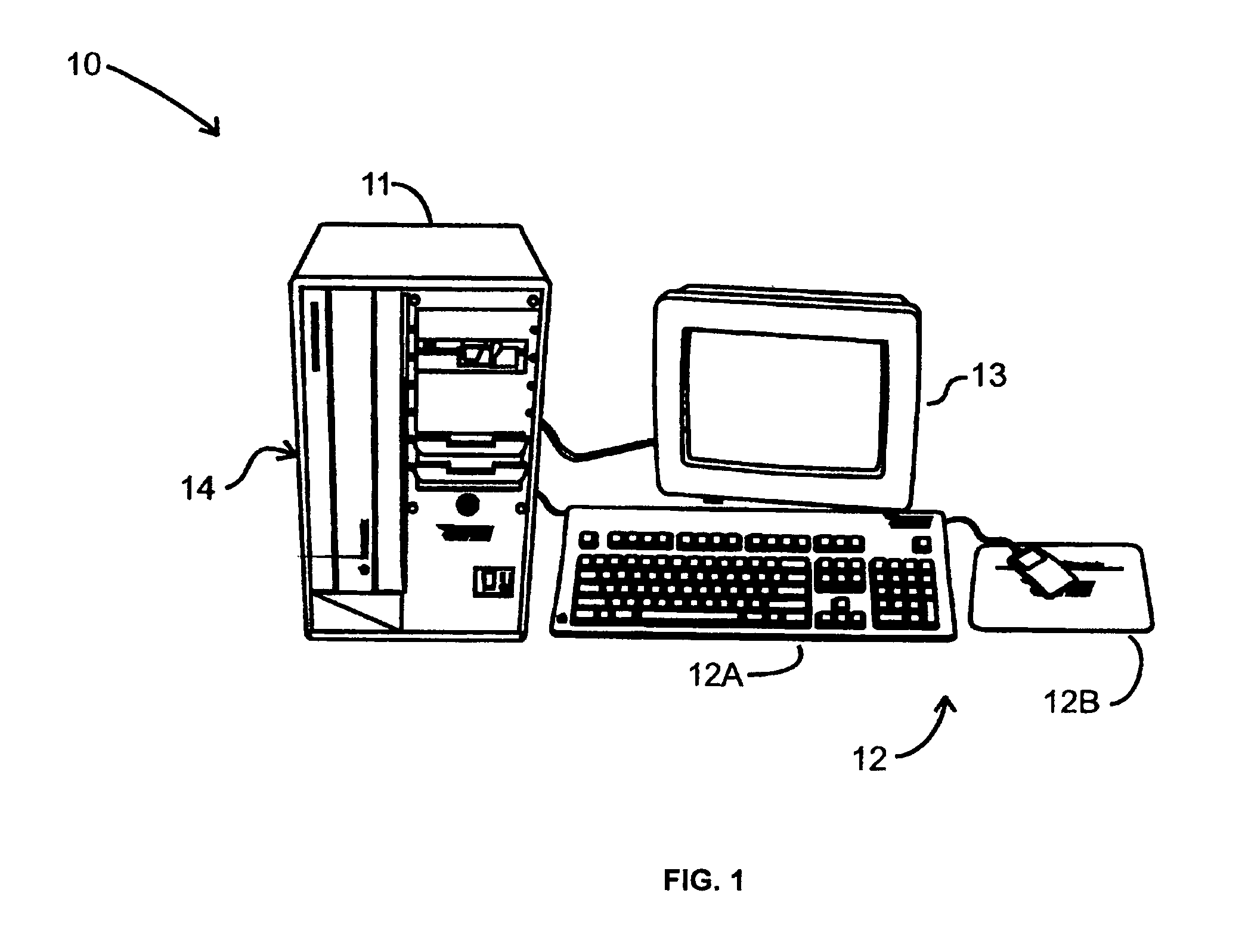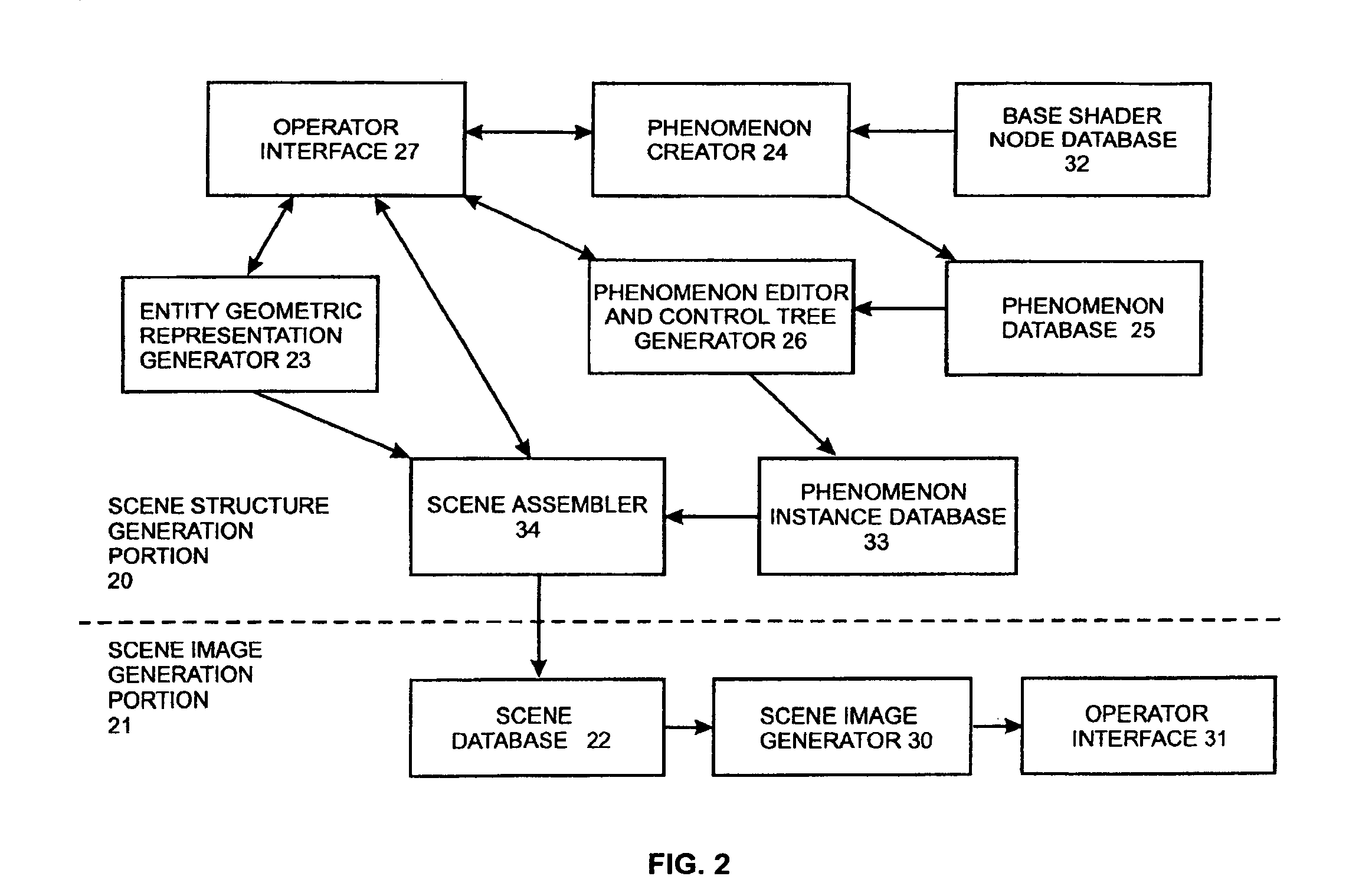Computer graphics shader systems and methods
a shader system and computer graphics technology, applied in the field of computer graphics and computer-aided design, can solve the problems of limiting the flexibility of shaders, limiting the ability of shaders to render features in an interesting and life-like manner, and using shaders
- Summary
- Abstract
- Description
- Claims
- Application Information
AI Technical Summary
Benefits of technology
Problems solved by technology
Method used
Image
Examples
Embodiment Construction
[0101]The present invention provides improvements to the computer graphics entity referred to as a “phenomenon”, which was described in commonly owned U.S. Pat. No. 6,496,190 incorporated herein by reference. Accordingly, we first discuss, in Section I below, the various aspects of the computer graphics “phenomenon” described in U.S. Pat. No. 6,496,190, and then, in Section II, which is subdivided into four subsections, we discuss the present improvements to the phenomenon entity.”
Section I. Computer Graphics “Phenomena”
[0102]U.S. Pat. No. 6,496,190 described a new computer graphics system and method that provided enhanced cooperation among shaders by facilitating generation of packaged and encapsulated shader DAGS, each of which can include one or more shaders, generated in a manner so as to ensure that the shaders in the shader DAGs can correctly cooperate during rendering.
[0103]In brief summary, a computer graphics system is provided in which a new type of entity, referred to as ...
PUM
 Login to View More
Login to View More Abstract
Description
Claims
Application Information
 Login to View More
Login to View More - R&D
- Intellectual Property
- Life Sciences
- Materials
- Tech Scout
- Unparalleled Data Quality
- Higher Quality Content
- 60% Fewer Hallucinations
Browse by: Latest US Patents, China's latest patents, Technical Efficacy Thesaurus, Application Domain, Technology Topic, Popular Technical Reports.
© 2025 PatSnap. All rights reserved.Legal|Privacy policy|Modern Slavery Act Transparency Statement|Sitemap|About US| Contact US: help@patsnap.com



